Using a Single-sig Wallet
This guide assumes you have already created a mnemonic. If that is not the case, head over to the Generating a Mnemonic page and complete those steps first.
When entering your mnemonic into Krux, make sure to select Single-sig before proceeding. The choice of Single-sig vs. Multisig at this point will change the derivation path used to generate your master extended public key (xpub) which will affect how wallet software handles it.
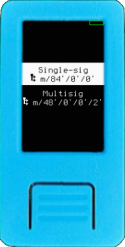
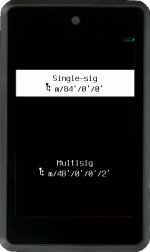
Selecting Single-sig will derive an xpub using the derivation path m/84'/0'/0' on mainnet and m/84'/1'/0' on testnet, which indicates to wallet software that a Segregated Witness (Segwit) script type should be used. For single-sig wallets, this script is P2WPKH, or just wpkh.
Note: The load of the Wallet Descriptor step is unnecessary for signing PSBTs with Single-sig wallets since the script type (wpkh) and key are already known. However, this can be useful if you wish to print a backup of the wallet or want an additional sanity check.
Specter Desktop¶
Create the wallet¶
In Specter Desktop, you will need to import your public key by adding a new device. Press the Add new device button on the left side of the app.

Krux is not listed as one of the available device types on the Add Device screen, so you will need to select the Other option.
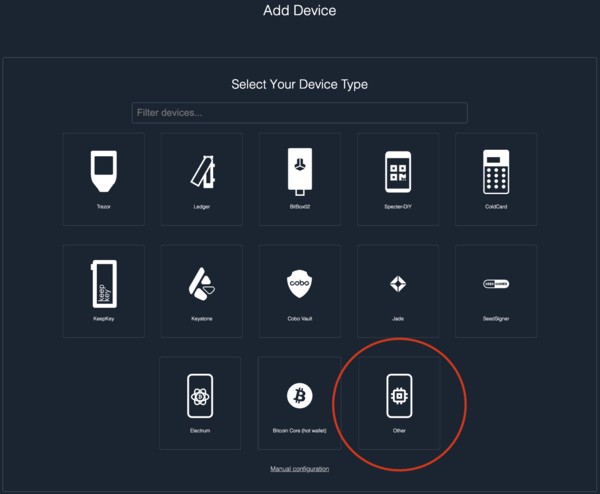
You will be taken to the Upload Keys screen where you can choose to Scan QR code.
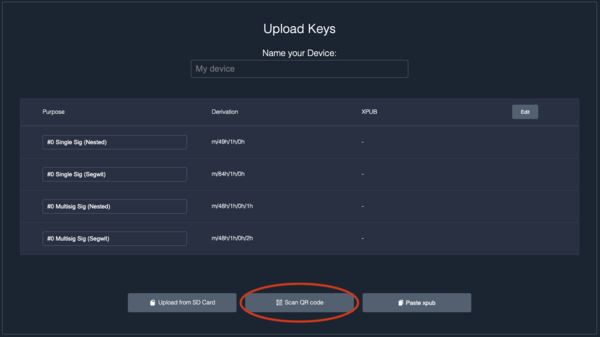
On your Krux, navigate to the Extended Public Key option under the main menu and show the first QR code to Specter Desktop.
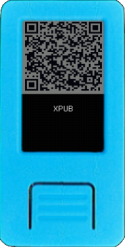
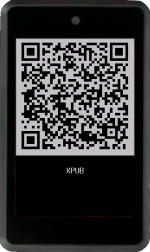
It should import the xpub and display the Purpose as #0 Single Sig (Segwit).

Give the device a name and press Continue. You should see the new device in the devices list on the left side of the app.

After you've added a device with your key to Specter Desktop, you can make a wallet using it. Press the Add new wallet button on the left side of the app.

Choose to create a Single key wallet when it asks which type of wallet you want on the following screen.
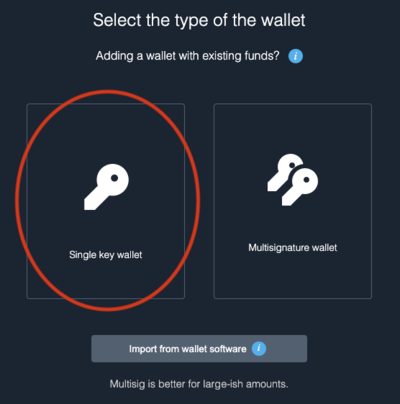
Select the device you just added.
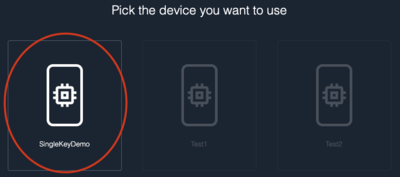
Give your wallet a name and make sure to select Segwit for the wallet type, then press Create wallet.
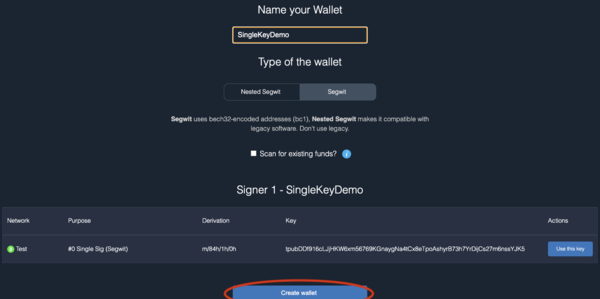
Congrats, you just created a single-sig wallet with your key!
Load the wallet into Krux¶
Load the wallet into Krux by going to the Settings page in Specter Desktop, then click the Export tab. There, press the Export button to display a QR code of your wallet.
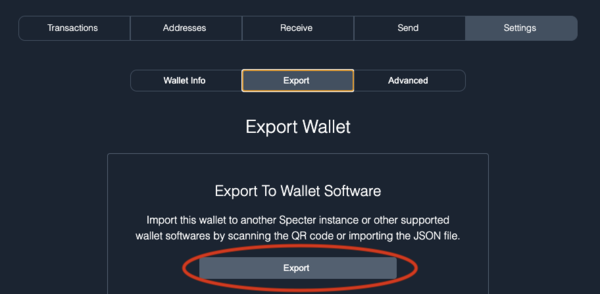
In Krux, select the Wallet Descriptor menu item option and scan the QR code.
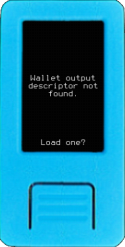
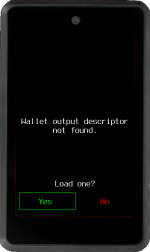
If it worked, Krux should display the wallet information that it loaded:
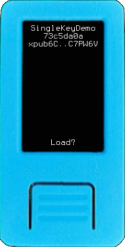
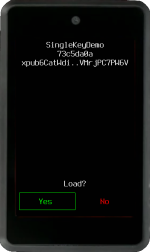
Receive coins¶
Navigate to the Receive screen where you should see a receive address that you can send funds to.
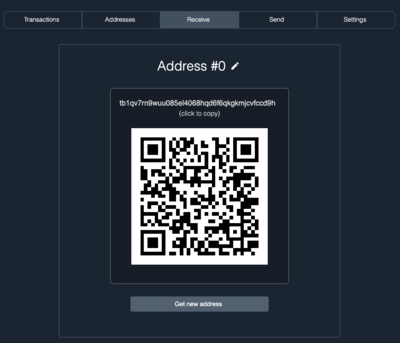
Send coins¶
Go to Send in Specter Desktop, fill in the recipient address, amount, and any extra information you wish to supply, and click Create unsigned transaction.
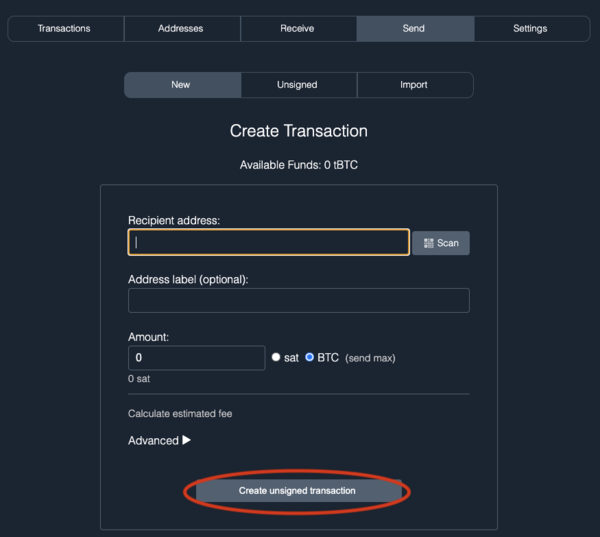
You will now see a screen listing the devices in your wallet. Select the device you want to sign the PSBT transaction with.
Specter Desktop will display an animated QR code of the PSBT that you can scan with Krux by going to Sign > PSBT in its main menu. After scanning, Krux should display info about the transaction for you to confirm before signing.
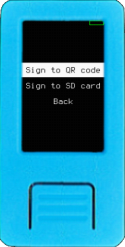
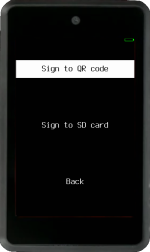
Once you have confirmed, Krux will begin animating a QR code of the signed transaction that you can scan into Specter Desktop.
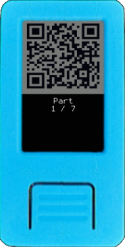
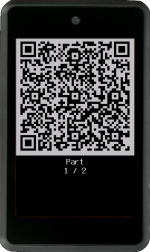
In Specter Desktop, click Scan signed transaction and show it the QR. Each part of the QR code that is read will receive a ghost icon to indicate progress.

Once all parts of the QR code have been read, you should see a window popup asking you to broadcast the transaction. Click Send transaction and your transaction should be broadcasted to the network!
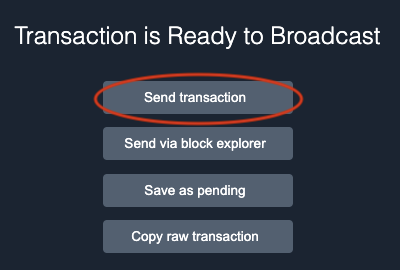
Congratulations, you have learned how to send a transaction using Specter Desktop 🎉
Sparrow¶
Create the wallet¶
In Sparrow, create a new wallet by going to File > New Wallet and give it a name.
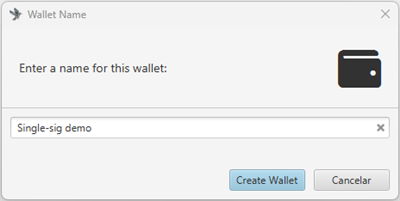
On the wallet screen, make sure to select a Single Signature policy type with the Native Segwit (P2WPKH) script type.
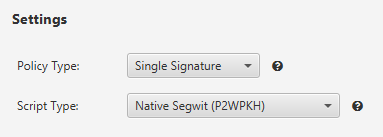
Now, you will need to import your public key. To do so, press the Airgapped Hardware Wallet button under Keystores section. On the screen that pops up, look for Krux option and click its 
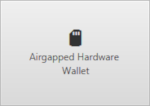

On your Krux device, navigate to the Extended Public Key option in the main menu and click on XPUB - QR Code and show it to Sparrow.


It should import the xpub and show a key tab under Keystores section:
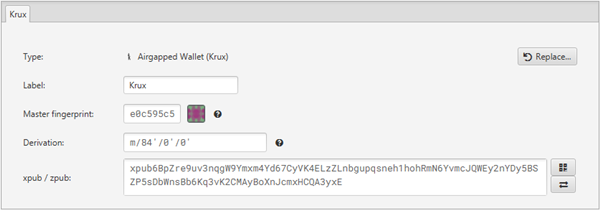
If everything looks right, click the blue Apply button to create your wallet.
Congrats, you just created a single-sig wallet with your key!
Load the wallet output descriptor into Krux (optional)¶
Single-sig wallets don't need to perform this step, it is optional! Load the wallet output descriptor into Krux by going to the Settings screen of the wallet in Sparrow, then click the (QR code symbol) button at Script Policy section to the right of the Descriptor: to display a QR code that you can scan with Krux.

In Krux, select the Wallet menu item option and scan the QR code.


If it worked, Krux should display the wallet information that it loaded:


Receive coins¶
Navigate to the Receive screen where you should see a receive address that you can send funds to.

Send coins¶
Go to the Send screen, fill in the recipient address, amount, and any extra information you wish to supply, and click the blue Create Transaction button.

On the next screen, make sure that the Signing Wallet is the one you created and that the Sighash is set to All. Click the blue Finalize Transaction for Signing button.

On the next screen, click Show QR to make Sparrow display an animated QR code of the PSBT that you can scan with Krux by going to Sign > PSBT > Load from camera in its main menu.
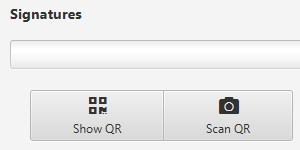
After scanning, Krux should display info about the transaction for you to confirm before signing.


Once you have confirmed, Krux will begin animating a QR code of the signed transaction that you can scan into Sparrow.


In Sparrow, click Scan QR and show it the QR. A progress bar will indicate how many parts of the QR have been read.
Once all parts of the QR code have been read, you should see the signature bar fill and two new buttons appear. Click the blue Broadcast Transaction button and your transaction should be broadcasted to the network!

Congratulations, you have learned how to send a transaction using Sparrow 🎉
BlueWallet¶
Create the wallet¶
In BlueWallet, create a new wallet by either pressing the + button or scrolling to the right until you see the Add now button.
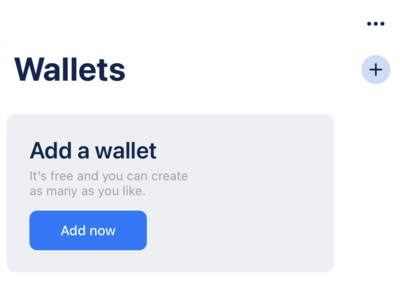
On the screen that pops up, tap Import wallet to import your public key.
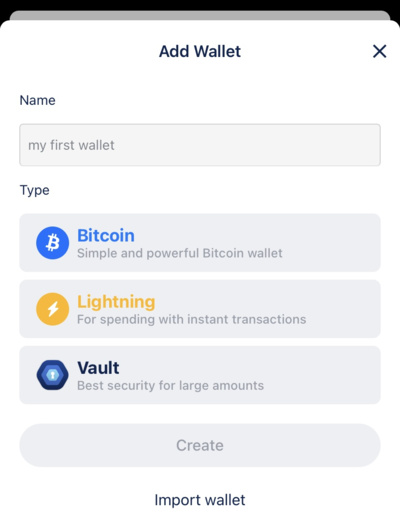
On the following screen, tap Scan or import a file and it will begin trying to scan a QR code.
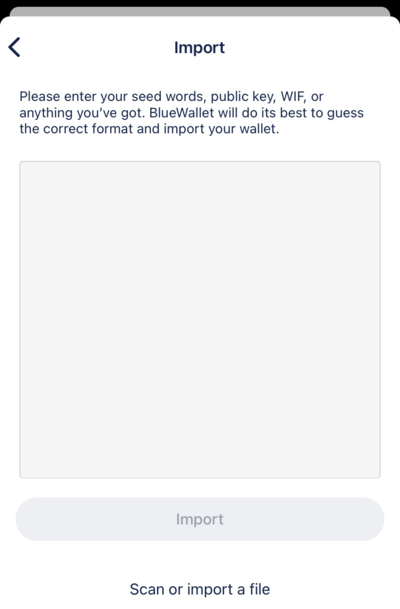
On your Krux, navigate to the Extended Public Key option under the main menu and make sure to show the second, zpub QR code to BlueWallet.
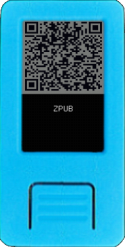
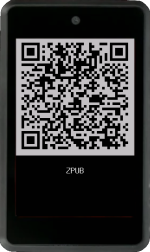
It should import the key and create a watch-only wallet. From here, you can send or receive.
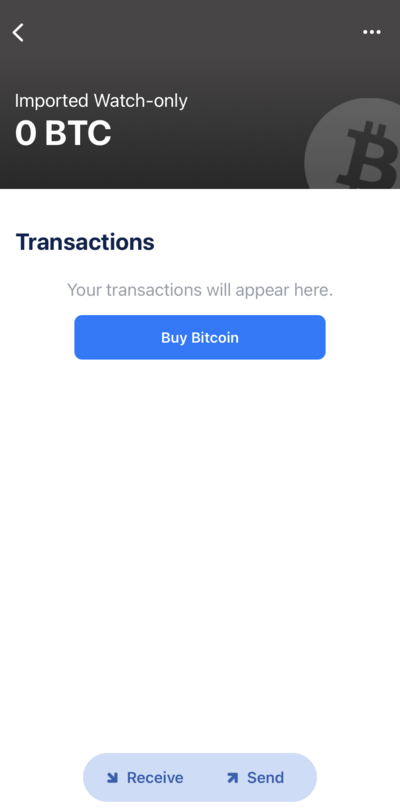
Congrats, you just created a single-sig wallet with your key!
Load the wallet into Krux¶
Load the wallet into Krux by tapping the ellipsis in the top-right to see the wallet settings.

From here, tap Export/Backup in order to display a QR code of your wallet.
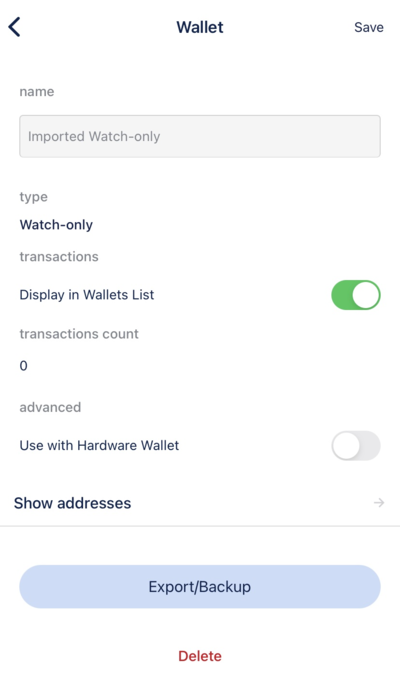
In Krux, select the Wallet Descriptor menu item option and scan the QR code.


If it worked, Krux should display the wallet information that it loaded:


Receive coins¶
Navigate to the Receive screen where you should see a receive address that you can send funds to.
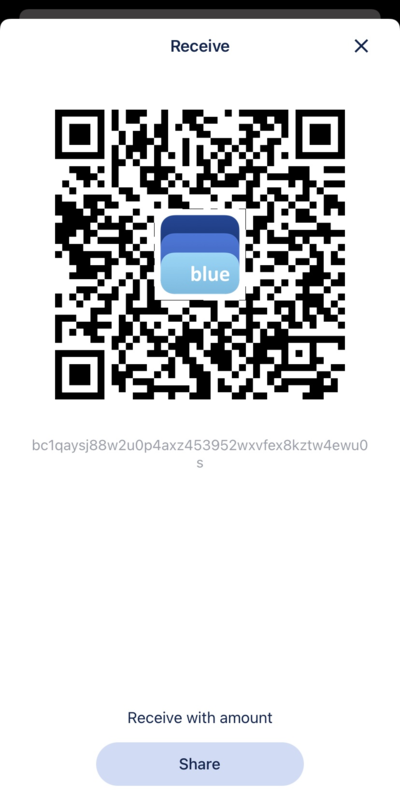
Note that you can verify the receive address belongs to your wallet by using the Scan Address option.
Send coins¶
Go to the Send screen, fill in the recipient address, amount, and any extra information you wish to supply, and tap Next.
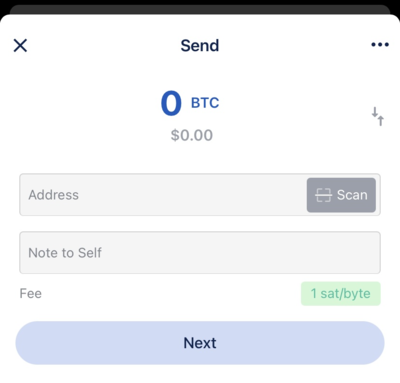
You should see an animated QR code of the PSBT that you can scan with Krux by going to Sign > PSBT in its main menu.
After scanning, Krux should display info about the transaction for you to confirm before signing.


Once you have confirmed, Krux will begin animating a QR code of the signed transaction that you can scan into BlueWallet.


Once all parts of the QR code have been read, you can then choose to broadcast the transaction, sending it to the network!
Congratulations, you have learned how to send a transaction using BlueWallet 🎉